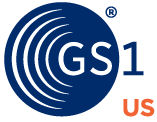Barcode is a broad term that includes linear 1D barcodes like UPC-A, EAN-13, ITF-14, GS1-128 and 2D barcodes like Data Matrix, GS1 DataMatrix, QR Code, and other barcode types. The QR Code is a specific type of barcode that is routinely scanned using mobile devices to access online content.
-
Barcodes are machine-readable symbols that are designed to carry data to support a variety of use cases. Businesses around the world use barcodes to automatically capture information to reduce errors and save time. Scanners read barcode patterns that represent numbers, letters, or special characters to systems that store and use the information from the barcode. Different types of barcodes encode different types of information, so it’s important to know which is right for your needs.
Generally, the best way to determine an item's barcode type will vary based on what information needs to be in the barcode, where it will be scanned, and if any regulations apply. Some barcode formats can include supplementary details about the product, like expiration dates or a batch/lot number. In addition to products, barcodes can contain information on a location, shipment, returnable asset, document, or other items that need data to be automatically captured and used by systems.
-
Related Topics
Identifying Barcodes and Their Use Cases
One way or another, we have all interacted with a barcode by scanning a product at checkout or returning a package, but there’s so much more going on behind the scenes. Our world is filled with multiple use cases for barcodes. In business, you’ll need the right barcode to get your product into the hands of your customers.
Your product or service might rely on multiple types of barcodes, providing total visibility from manufacturing, shipping and logistics, distribution, and inventory management all the way down to managing in-store returns and purchases.
GS1 helps to create an all-in-one solution by providing globally recognized, unique, and authentic barcode products. Read on to learn more about the right barcode type for your needs.
1D Barcode Types

UPC A Barcode
A UPC-A barcode is a linear, or 1D, barcode and is made up of 12 digits that are used to help identify the product and its manufacturer. This type of barcode is used globally and is one of the many widely used barcodes in North America.
The UPC-A is used for retail products like groceries, electronics, clothes, toys, cosmetics, DIY materials, and just about everything else you may buy or sell in a retail environment.
UPC-A barcodes are occasionally used for distribution like cases and pallets; however their main use is at retail point of sale.

EAN 13 Barcode
The EAN-13 barcode is also a linear, or 1D, barcode and is made up of 13 digits. “EAN” stands for European Article Number. As the name suggests, this barcode is commonly found outside of North America, however it is recognized globally like all GS1 US barcode products. EAN-13 barcodes are found in the same retail spaces as UPC barcodes.
For more information on EAN-13s, including licensing, please reach out to info@gs1us.org

GS1-128 Barcode
The GS1-128*, also a linear or 1D barcode, holds up to 48 symbol characters and is commonly used in support of cases involving general distribution and logistics applications. It encodes either a GTIN or Serial Shipping Container Code (SSCC) when a logistics label is what you need. What makes it unique from other linear barcodes is its ability to carry attribute data about a product, such as best-before date, batch/lot number, quantity, weight, and many other attributes.
*GS1-128 barcodes can only be created with a GS1 Company Prefix membership.

UPC-E Barcode
The UPC-E is a linear 1D barcode consisting of 6 digits, predominantly utilized in the retail and grocery industries worldwide, particularly when space is limited. You’ll commonly find a UPC-E as an item barcode on candy, cosmetics, yogurt cups, or trial-size items because it’s a compact version of the UPC-A. While we no longer license the UPC-E prefix, we do have other options available. You can choose from our GS1 Company Prefix license or a single GTIN option instead.

EAN 8 Barcode
EAN-8 barcodes are linear, 1D barcodes. The EAN-8 is designed to be a small barcode, like the UPC-E. EAN-8 barcodes are used when space is limited on packaging and a UPC-A or EAN-13 will not fit. The EAN-8 consists of an 8-digit GTIN to identify the product that is displayed as two groups of four.

ITF-14 Barcode
The ITF-14 barcode is generally used on larger packaging sizes of a product, such as a case or carton that is not scanned at the point-of-sale. It is ideal for direct printing on corrugated material, so it can be used on cases and pallets in general distribution, which is how products typically move through the supply chain.
2D Barcode Types

QR Code Barcode
A QR Code is a type of 2D barcode that is frequently used by consumers for linking to information about something on the web. A URL can be encoded into a QR Code to make a website, landing page, image, or anything else online easily accessible with a simple scan. The GS1 identifiers and data that brands and retailers use today for their products can be used in a QR Code too! GS1 Digital Link is a format for doing just that, making products web-friendly, allowing for more-robust consumer engagement while still capable of enabling supply chain functions like price look-up.

Data Matrix Barcode
A Data Matrix barcode can encode up to 2,335 characters in a relatively small space. A Data Matrix comes in square and rectangular versions and contains built-in error correction that adds to its reliability. Like a QR Code, it can link to websites with product information, providing more data or a consumer experience.
It is a 2D barcode that is used in a variety of applications. The Data Matrix barcode is broadly used in fresh foods, construction, and other products that require more information beyond the standard barcode.
This type of barcode can hold a web-friendly GS1 Digital Link format that looks just like the URLs used in your browser. This web-friendly URL data format allows a Data Matrix barcode to connect users to online resources just like a QR Code does.

GS1 DataMatrix Barcode
Although similar to a Data Matrix barcode, the GS1 DataMatrix barcode does not support a GS1 Digital Link. As this barcode is designed primarily to support the healthcare industry, it can be used to identify medical devices, pharmaceuticals, and other healthcare products.
Barcode FAQs
GS1 US offers a wide range of resources to help with everything from exploring which barcode type is best for your business to how to successfully implement barcode products throughout your supply chain.
Barcode vs. QR Code
What Is a 2D Barcode?
2D barcodes are matrix symbols that encode information in a grid pattern. The first 2D barcodes were developed in the late 1980s in response to the need to encode more data in a smaller space than what is possible with 1D barcodes.
New 2D barcodes were developed to further enhance their efficiency and ability to meet business needs, with many of the barcodes we use today invented in the 1990s. Many 2D barcodes also include error correction, which allows barcodes with damage or that are otherwise obscured to be readable. The use of 2D barcodes continues to grow and the need to access information expands.
What Is a 3D Barcode?
The term 3D barcode is sometimes used to describe barcodes that are applied to an object through dot peening, engraving, etching, embroidery, and other means that result in a three-dimensional “bumpy” application. 2D barcodes like Data Matrix and QR Codes can be applied directly. In some cases, special scanning equipment is needed to scan these barcodes. Medical instruments that are sterilized and reused, machinery that is exposed to harsh environments, and washable uniforms are all examples of items that may have a 3D barcode.
Why GS1 US?
GS1 US is a not-for-profit information standards organization. GS1 Standards are the most widely used supply chain standards in the world.
Recommended Resources
Here are additional resources that might interest you:
Get Your UPC Barcodes From GS1 US
Scale Up With a GS1 Company Prefix
A GS1 Company Prefix allows businesses to get multiple barcodes at a single time, as well as identify locations, mixed cases, create coupons, and create higher levels of packaging like a case or pallet.
Start Small With a GS1 US GTIN
Barcodes issued by GS1 US uniquely identify a single retail product online and in retail stores around the world. If you have only a few products that need barcodes, this might be the most cost-effective option for your company.




